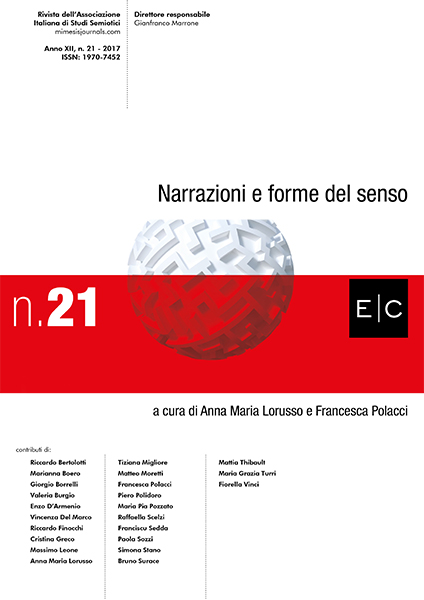Three Kinds of Nostalgia in the Television Series
Abstract
This article aim is to distinguish and to describe some ways nostalgia can be present in media and, in particular, in television series. The first sections offer a review of the academic literature about nostalgia, with a specific focus on semiotics. After a discussion of previous taxonomies and of Algirdas Julien Greimas’ lexical analysis of the term “nostalgia”, the article proposes a new typology of the ways this passion can be present in a television series. First of all, it is important to distinguish between nostalgia as a represented passion (that is nostalgia as a passion felt by the characters and represented in the text) and nostalgia as a text effect (that is nostalgia as a passion directly or indirectly produced by the text). In addition, we can recognize two kinds of nostalgia as a text effect: nostalgia as a “textual effect” (when it is directly produced by the text because it’s one of its possible meaning effects) and nostalgia as a “circumstantial effect” (when it is produced by the circumstances in which the text is received and consumed). This three kind of nostalgia are not mutually exclusive, but they can overlap (as it is in the case of the television series Friends); and the model proposed by the article is not alternative, but complementary to those already present in literature.



